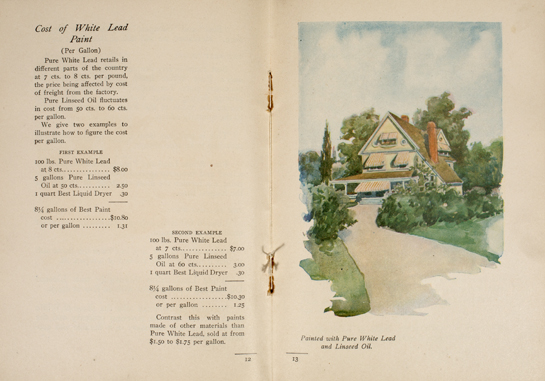04. "What Paint and Why." National Lead Company; Chicago, IL; c.1904.
Like asbestos, the use of lead in common objects dates back thousands of years. A common and inexpensive metal, lead was long a highly desirable paint additive due to its high opacity, insolubility in water, resistance to moisture and ability to produce a wide variety of colors. As early as 1910, scientists were sounding the alarm on the deleterious effects of lead on the brain and central nervous system, though it was not until 1978 that lead-based paints were banned for use in housing within the U.S. Rather than being a case of simple regulatory failure or corporate strong-arm tactics, the social historian Christian Warren suggests instead that “the debate over lead paint regulation suggests a regulatory milieu far more culture bound than most analyses allow”5 in which all stakeholders accepted a known rish because “most Americans in 1910 agreed that...the best paints all contained lead.”6
5. Christian Warren, “Toxic Purity: The progressive era origins of America’s lead paint poisoning epidemic.” Business History Review, vol. 73, no. 4 (1999): 705. ↩
6. Ibid.↩
"Tools of the Trade: 19th- and 20th-Century Architectural Trade Catalogs," Case 3, Ryerson & Burnham Libraries, August 4, 2015-October 12, 2015.
Link to R&B Archives Digital Collections record

